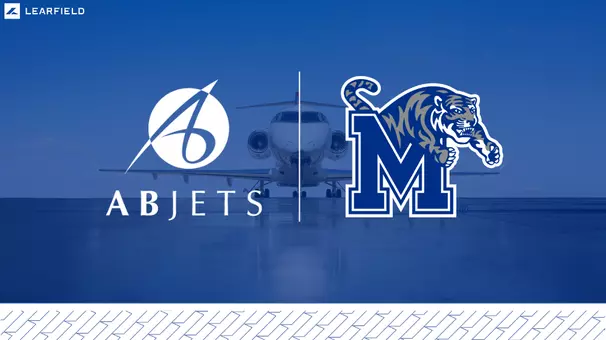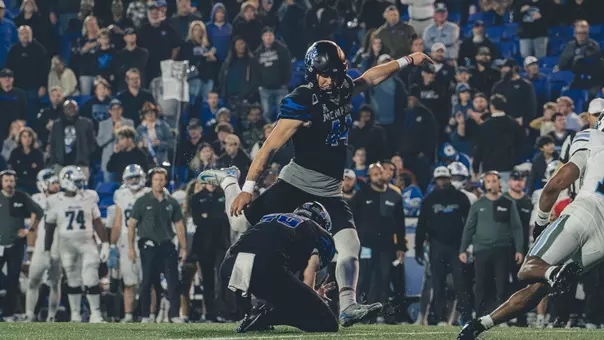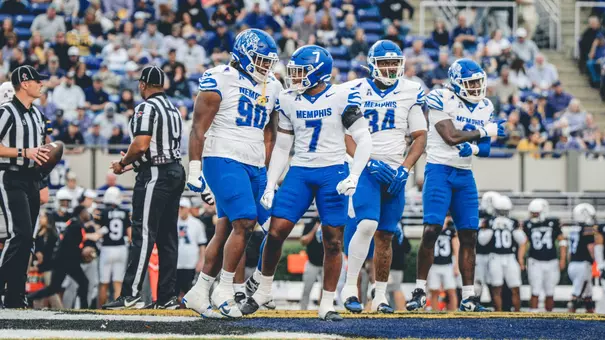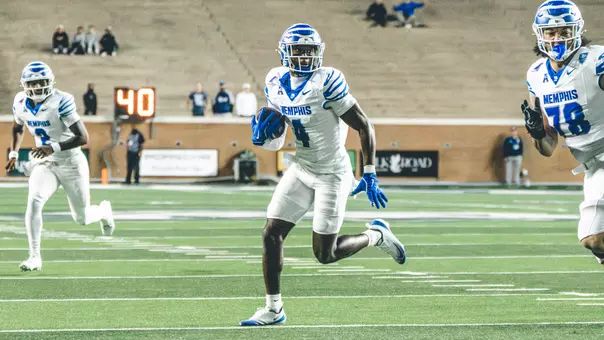University of Memphis Athletics
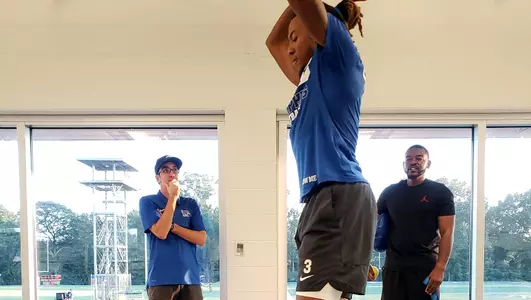
Field Laboratory
Dec 22, 2018 | Football, General
Tigers athletic training bringing science to the fields, courts.
NOTE: This feature first appeared in the Tigers Football GameDay program Nov. 10 when Memphis hosted Tulsa.
Athletes hear coaches all the time. In games. In practices. At team meetings. And maybe even in their sleep.
How about a coach talking to athletes while they're walking just across campus? Crazy, but it's happening for Tigers athletes with a new program that's bringing together sports science and athletics at the University of Memphis.

"They (sensors) do a lot, and the data we get from them is extremely useful," said Larry Reynolds, Memphis' Senior Athletic Trainer. "I almost compare it to having a coach around your wrists or ankles."
"I like the idea of being one of the first college athletes to be tested like this," said Quinn, who suffered an ACL injury earlier this year. "When I put them (sensors) on my ankles the first time, it felt tight. But as I wore them day after day, I got used to it.
"Wearing them has helped change how I walk now. I was using my left leg more than my right leg, and the numbers (data) showed me that."
Memphis is one of the first schools in the country to use the program to test bone loads, and according to Reynolds, the hook-up came through a previous relationship with Dr. Max Paquette in the University's School of Health Studies.

"I originally wanted to be a coach, but I headed down the sports science route because it fit my personality a little better," said Greenwood. "I'm a quiet person, and I didn't like yelling at people."
But Greenwood is on the field in a different way, bringing his laboratory out to practice.

"We're in that unique area at the university where we're combining those knowledge sources together that will take us further. We're taking our students in the research area and now they're applying their research in the real world."
Athletes hear coaches all the time. In games. In practices. At team meetings. And maybe even in their sleep.
How about a coach talking to athletes while they're walking just across campus? Crazy, but it's happening for Tigers athletes with a new program that's bringing together sports science and athletics at the University of Memphis.
Simply put, the program tracks bone loading using inertial sensors that can be worn around the ankles or wrists. The data gathered is used to help athletes learn how much force they are putting on their joints and how to bone load appropriately – even when walking to class.

"They (sensors) do a lot, and the data we get from them is extremely useful," said Larry Reynolds, Memphis' Senior Athletic Trainer. "I almost compare it to having a coach around your wrists or ankles."
Sophomore quarterback Markevion Quinn is one of Memphis' first athletes to use the technology, and he was excited for the opportunity.
"I like the idea of being one of the first college athletes to be tested like this," said Quinn, who suffered an ACL injury earlier this year. "When I put them (sensors) on my ankles the first time, it felt tight. But as I wore them day after day, I got used to it.
"Wearing them has helped change how I walk now. I was using my left leg more than my right leg, and the numbers (data) showed me that."
Memphis is one of the first schools in the country to use the program to test bone loads, and according to Reynolds, the hook-up came through a previous relationship with Dr. Max Paquette in the University's School of Health Studies.

"We were approaching the seven-month mark (in rehab) for Markevion, which is usually the time we start testing," Reynolds said. "We were looking for options to test, and the University's Exercise, Sport and Movement Sciences area told us they had a program that tracks bone loading and asked if we would be interested in it. It sort of fell into our lap, and it's been great."
Enter Dr. Daniel Greenwood, Director of Sports Performance and Health Consulting Center in the School of Health Studies.
Greenwood, who had been a senior scientist at the Australian Institute of Sport for four years, literally had just arrived in Memphis from Down Under when he teamed with Reynolds as the fall semester started. Greenwood, though, is not your regular scientist, as he had an interest in sports before he chose his current profession.
"I originally wanted to be a coach, but I headed down the sports science route because it fit my personality a little better," said Greenwood. "I'm a quiet person, and I didn't like yelling at people."
But Greenwood is on the field in a different way, bringing his laboratory out to practice.
"We want to know what coaches and trainers want answered," Greenwood said. "We're good at answering them, but we're not good at finding the questions. What is unique is that a lot of colleges have scientists that are in labs and answering questions that people have. But very few are answering those questions in the field, getting data on a daily basis to coaches to change their behavior and training strategies to change athlete behavior.
"The next step we're taking with Memphis is we've got the sensors tracking in training, and we're making changes to the training environment and not just measuring."
And the tracking of bone loads in training has revolutionized how Reynolds and his staff design rehab workouts on a daily basis.

"It's the perfect sports marriage of athletic training and sports performance," Reynolds said. "Sports performance and science aims to answer those questions that we all have. Are we doing enough? Is what we're doing effective? All of those things can be answered through data and research.
"We have guys here answering the questions to help me be a better rehabilitation practitioner. Since starting this, Quinn has had a 180 turnaround in a matter of six weeks. It's awesome to see how this works together."
Greenwood added, "We're about merging scientific knowledge with coach-specific knowledge to answer applied questions. We've got the knowledge based on books, science and research, and coaches have years and years of experience on what they've seen.
"We're in that unique area at the university where we're combining those knowledge sources together that will take us further. We're taking our students in the research area and now they're applying their research in the real world."
Players Mentioned
Football: Ryan Silverfield Press Conference-November 22, 2025
Saturday, November 22
Football: Sutton Smith Press Conference - November 15, 2025
Sunday, November 16
Football: Ryan Silverfield Press Conference - November 15, 2025
Sunday, November 16
Football: Jordon Hankins Press Conference-November 12, 2025
Wednesday, November 12

